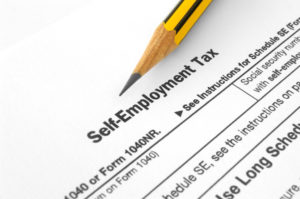Tax-Saving Tips
Health Savings Accounts: The Ultimate Retirement Account
It isn’t easy to make predictions, especially about the future. But there is one prediction we’re confident in making: you will have substantial out-of-pocket expenses for health care after you retire. Personal finance experts estimate that an average retired couple age 65 will need at least $300,000 to cover health care expenses in retirement.
You may need more.
The time to save for these expenses is before you reach age 65. And the best way to do it may be a Health Savings Account (HSA). After several years, you could have a fat HSA balance that will help pave your way to a comfortable retirement.
Not everyone can have an HSA. But you can if you’re self-employed or your employer doesn’t provide health benefits. Some employers offer, as an employee fringe benefit, either HSAs alone or HSAs combined with high-deductible health plans.
An HSA is much like an IRA for health care. It must be paired with a high-deductible health plan with a minimum annual deductible of $1,400 for self-only coverage ($2,800 for family coverage). The maximum annual deductible must be no more than $7,050 for self-only coverage ($14,100 for family coverage).
An HSA can provide you with three tax benefits:
- You or your employer can deduct the contributions, up to the annual limits.
- The money in the account grows tax-free (and you can invest it in many ways).
- Distributions are tax-free if used for medical expenses.
No other tax-advantaged account gives you all three of these benefits.
You also have complete flexibility in how to use the account. You may take distributions from your HSA at any time. But unlike with a traditional IRA or 401(k), you do not have to take annual required minimum distributions from the account after you turn age 72.
Indeed, you need never take any distributions at all from your HSA. If you name your spouse the designated beneficiary of your HSA, the tax code treats it as your spouse’s HSA when you die (no taxes are due).
If you maximize your contributions and take few distributions over many years, the HSA will grow to a tidy sum.
Partnership with Multiple Partners: The Good and the Bad
The generally favorable federal income tax rules for partnerships are a common reason for choosing to operate as a partnership with multiple partners instead of as a corporation with multiple shareholders. The most important partnership tax benefit rules can be summarized as follows:
- You get pass-through taxation.
- You can deduct partnership losses (within limits).
- You may be eligible for the Section 199A tax deduction.
- You get basis from partnership debts.
- You get basis step-up for purchased interests.
- You can make tax-free asset transfers with the partnership.
- You can make special tax allocations.
Partnership taxation is not all good stuff. There are a few important disadvantages and complications to consider:
- Exposure to self-employment tax
- Complicated Section 704(c) tax allocation rules
- Tricky disguised sale rules
- Unfavorable fringe benefit tax rules
Limited partnerships are obviously treated as partnerships for federal income tax purposes, with the generally favorable partnership taxation rules mentioned above.
Limited partners generally are not exposed to liabilities related to the partnership or its operations. So, you generally cannot lose more than what you’ve invested in a limited partnership—unless you guarantee partnership debt.
So far, so good. But you must also consider the following disadvantages for limited partners:
- Limited partners usually get no basis from partnership liabilities.
- Limited partners can lose their liability protection.
- You need a general partner.
On the plus side, limited partners have a self-employment tax advantage.
Since your partnership will have multiple partners, multiple issues can come into play. You’ll need a carefully drafted partnership agreement to handle potential issues even if you don’t expect them to arise. For instance, you may want to include
- a partnership interest buy-sell agreement to cover partner exits;
- a non-compete agreement (for obvious reasons);
- an explanation of how tax allocations will be calculated in compliance with IRS regulations;
- an explanation of how distributions will be calculated and when they will be paid (for instance, you may want to call for cash distributions to be made annually in early April to cover partners’ tax liabilities from their shares of partnership income for the previous year);
- guidelines for how the divorce, bankruptcy, or death of a partner will be handled;
- and so on.
Key point. No type of entity (including a limited partnership in which you are a limited partner) will protect your personal assets from exposure to liabilities related to your own professional malpractice or your own tortious acts.
Send Tax Documents Correctly to Avoid IRS Trouble
You have heard the horror stories about mail sent to the IRS that remains unanswered for months. Reportedly, the IRS has mountains of unanswered mail pieces in storage trailers, waiting for IRS employees to process them.
Because the understaffed IRS is having so much trouble processing all the documents it receives, you need to protect yourself when you send an important tax filing due by a specific deadline.
If you can file a document electronically, do so. The IRS deems such filings as filed on the date of the electronic postmark.
If you must file a physical document with the IRS, don’t use regular U.S. mail, Priority Mail, or Express Mail.
Why not?
When you mail a document with these methods, the IRS considers it filed on the postmark date, but only if the IRS receives it. What if the U.S. Postal Service doesn’t deliver it or the IRS loses it? You’ll have no way to prove the IRS got it—and the IRS and most courts won’t accept your testimony that it was timely mailed.
Don’t take this chance. Instead, file physical documents by certified or registered U.S. mail, or use an IRS-approved private delivery service (generally, two-day or better service from FedEx, UPS, or DHL Express). When you do this, the IRS considers the document filed on the postmark date whether or not the IRS receives it.
Make sure to keep your receipt.
Tax Implications When Your Vacation Home Is a Rental Property
If you have a home that you both rent out and use personally, you have a tax code-defined vacation home.
Under the tax code rules, that vacation home is either
- a personal residence or
- a rental property.
The tax code classifies your vacation home as a rental property if
- you rent it out for more than 14 days during the year, and
- your personal use during the year does not exceed the greater of (a) 14 days or (b) 10 percent of the days you rent the home out at fair market rates.
Count actual days of rental and personal use. Disregard days of vacancy, and disregard days that you spend mainly on repair and maintenance activities.
For vacation homes that are classified as rental properties, you must allocate mortgage interest, property taxes, and other expenses between rental and personal use, based on actual days of rental and personal occupancy.
Mortgage Interest Deductions
Mortgage interest allocable to personal use of a rental property does not meet the definition of qualified residence interest for itemized deduction purposes. The qualified residence interest deduction is allowed only for mortgages on properties that are classified as personal residences.
Schedule E Losses and the PAL Rules
When allocable rental expenses exceed rental income, a vacation home classified as a rental property can potentially generate a deductible tax loss that you can claim on Schedule E of your Form 1040. Great!
Unfortunately, your vacation home rental loss may be wholly or partially deferred under the dreaded passive activity loss (PAL) rules. Here’s why.
You can generally deduct passive losses only to the extent that you have passive income from other sources (such as rental properties that produce positive taxable income).
Disallowed passive losses from a property are carried forward to future tax years and can be deducted when you have sufficient passive income or when you sell the loss-producing property.
“Small Landlord” Exception to PAL Rules
A favorable exception to the PAL rules currently allows you to deduct up to $25,000 of annual passive rental real estate losses if you “actively participate” and have adjusted gross income (AGI) under $100,000. The $25,000 exception is phased out between AGI of $100,000 and $150,000.
The Seven-Days-or-Less and Less-Than-30-Days Rules
The IRS says the $25,000 small landlord exception is not allowed
- when the average rental period for your property is seven days or less, or
- when the average period of customer use for such property is 30 days or less, and significant personal services are provided by or on behalf of the owner of the property in connection with making the property available for use by customers.
“Real Estate Professional” Exception to PAL Rules
Another exception to the PAL rules currently allows qualifying individuals to deduct rental real estate losses even though they have little or no passive income. To be eligible for this exception,
- you must spend more than 750 hours during the year delivering personal services in real estate activities in which you materially participate, and
- those hours must be more than half the time you spend delivering personal services (in other words, working) during the year. If you can clear those hurdles, you qualify as a real estate professional.
The second step is determining whether you have one or more rental real estate properties in which you materially participate. If you do, those properties are treated as non-passive and are therefore exempt from the PAL rules. That means you can generally deduct losses from those properties in the current year.
Meeting the Material Participation Standard
The three most likely ways to meet the material participation standard for a vacation home rental activity are when the following occur:
- You do substantially all the work related to the property.
- You spend more than 100 hours dealing with the property, and no other person spends more time on this property than you do.
- You spend more than 500 hours dealing with the property.
In attempting to clear one of these hurdles, you can combine your time with your spouse’s time. But if you use a management company to handle your vacation home rental activity, you’re unlikely to pass any of the material participation tests.



